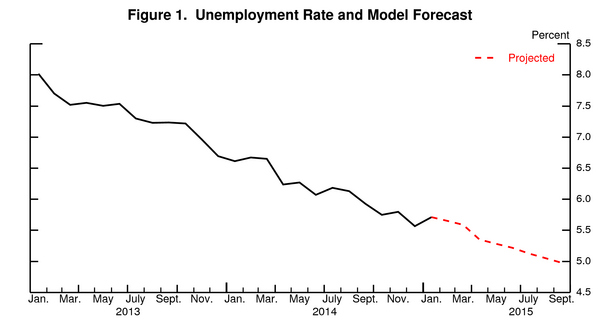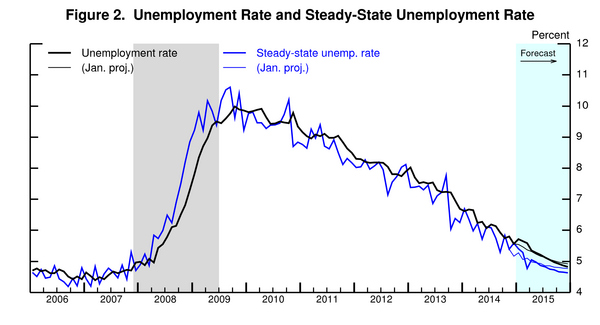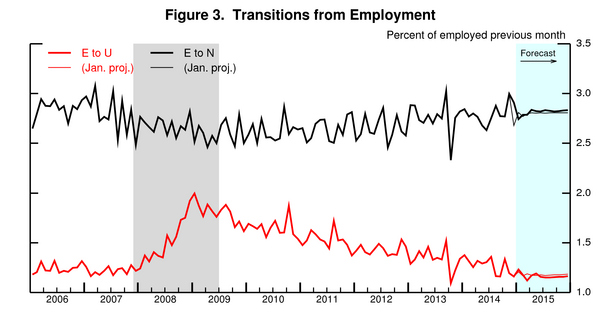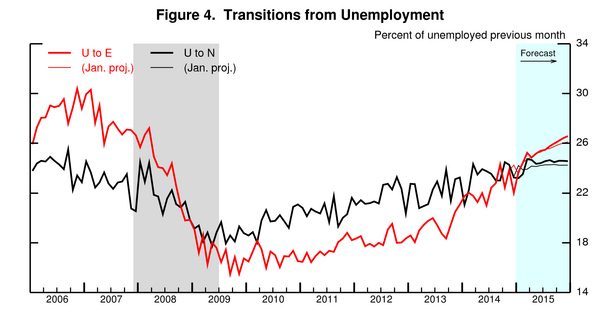This post discusses my monthly update of the Barnichon-Nekarda model. For an introduction to the basic concepts used in this post, read my introductory post (Full details are available here.)
In January, the unemployment rate increased by 10 basis points to 5.7 percent, whereas the model anticipated 10 basis points decline. The difference owes to an unexpected large drop in workers’ job finding rate last month. According to the model, this drop is transitory (likely “noise” in the data) and should be reversed over the next two months. As a result, the contour of the forecast is unchanged compared to last month, and I still expect unemployment to decline over the next 6 months with a jobless rate at 5.2 percent by June 2015.

This model’s forecast can be easily understood by looking at the projected behavior of the “steady-state” unemployment rate. The steady-state unemployment rate, the rate of unemployment implied by the underlying labor force flows—the blue line in figure 2— stands currently at 5.6 precent, 0.1 percent lower than the actual unemployment rate. Our research shows that the actual unemployment rate converges toward this steady state. With a steady-state unemployment rate close to the actual rate, there is little “steady-state convergence dynamic” pushing down the unemployment rate down this month. However, once the job finding rate erases its February drop and resumes its strong upward momentum (figure 4), the steady-state unemployment rate will decline fast, and this will push down the unemployment rate over the next 6 months




To read more about the underlying model and the evidence that it outperforms other unemployment rate forecasts, see Barnichon and Nekarda (2012).
The Brookings Institution is committed to quality, independence, and impact.
We are supported by a diverse array of funders. In line with our values and policies, each Brookings publication represents the sole views of its author(s).




Commentary
Unemployment to stay steady at 5.7 percent in February, then decline to 5.2 percent in the next 6 months
March 4, 2015